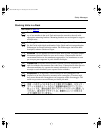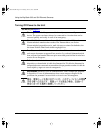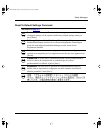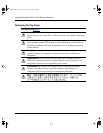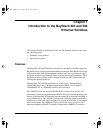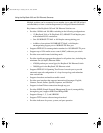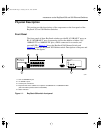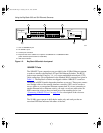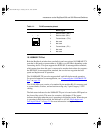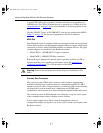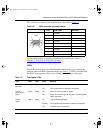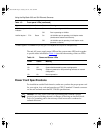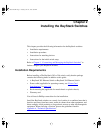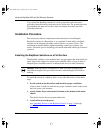
Introduction to the BayStack 303 and 304 Ethernet Switches
893-01010-A 1-5
10/100BASE-TX Port
Both the BayStack switches have one built-in and one optional 10/100BASE-TX
port that is designed to operate either at 10 Mb/s or at 100 Mb/s depending on the
connecting device. This port supports the IEEE 802.3u autonegotiation standard,
which means that when this port is connected to another device that also supports
the IEEE 802.3u autonegotiation standard, the two devices negotiate the best
speed and duplex mode of operation.
The 10/100BASE-TX port also supports half- and full-duplex mode operation.
For more information on autonegotiation, see “
Connecting the 10/100BASE-TX
Port” on page 2-9.
The 10/100 Mb/s port consists of a standard 8-pin modular RJ-45 connector used
to connect hubs, switches, and end stations using only 2-pair Category 5 UTP
cabling.
The link status indicator for the 100BASE-TX port is located on the LED panel on
the front of the switch. This area also contains a full-duplex (F Dx) status
indicator that lights when the port is operating in full-duplex mode. When the port
is operating in half-duplex mode, the indicator is off. See “
Half-duplex and
Full-duplex Mode” on page 2-9 for more information on duplex mode.
Table 1-1. RJ-45 connector pinout
Pin
MDI-X signal
1 Receive data + (RD+)
2 Receive data –(RD–)
3 Transmit data + (TR+)
4 Not used
5 Not used
6 Transmit data– (TD–)
7 Not used
8 Not used
18
3165.1
89301010.BK Page 5 Tuesday, June 10, 1997 8:00 PM



